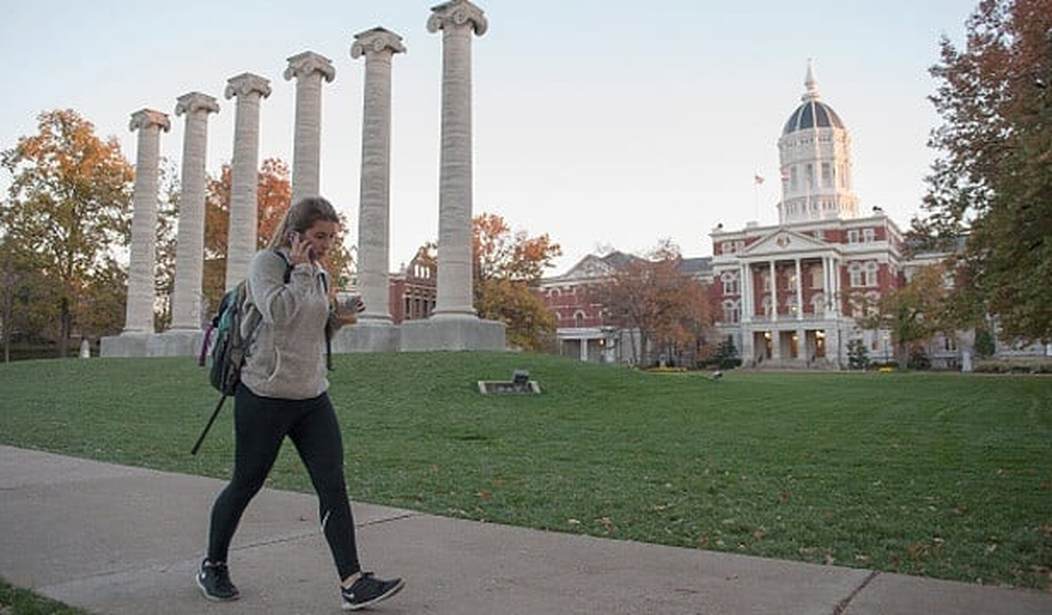On Oct. 7, as the protests had started to pick up steam, a student wrote to the chancellor describing her encounter with a group of Black Lives Matter supporters.
“Everyone has freedom of speech and expression,” she wrote, “but this was a large group of people. I know I’m not alone in saying that I felt very unsafe and targeted when I encountered them,” describing “people screaming at me from the sidewalk.” She wrote that “all lives matter and discrimination should be fought against,” but she feared “that group brought more division, hostility and discrimination than that one man [yelling racial slurs] could have.”
***
A day after Mizzou’s high-profile resignations, a university employee wrote to Wolfe describing her frustration after seeing the video where Melissa Click, a communications professor, called for “muscle” against a student reporter.
“My fear is that things are going to get out of hand and something very bad is going to happen,” she wrote. “My husband is a Sgt. For the University Police and he is having to be in the middle of this mess and having someone like Melissa Click do everything in her power to incite a riot will make things go from bad to worse. I normally take walks around the campus a couple of times a day but currently am afraid to do so because I am white. My daughter goes to school at Mizzou, has some night classes, and she is now afraid to walk around campus and go to class because she is white.”
That same day, a parent wrote to the heads of the university on behalf of her daughter, who she said was so frightened she was trying to transfer out of the university.
“My white female student is being mobbed on her way to class and shouted at while being pushed claiming she’s a racist solely because of the color of her skin. … In the last 2 days she’s had 3 cancelled classes so her teachers could participate in this nonsense. So we’re paying for our child’s teachers to protest instead of educate?” she wrote.
Their fears were not unfounded. Last November, Fox 2 St. Louis tracked assault dispatch calls near campus for the past year. They discovered dozens of violent assaults — mostly on Mizzou students.
Dee Baebler said, “It`s not hype if the small group of people that I know in Columbia have a personal connection to at least one person that`s been violently attacked.”Baebler is a St. Louis mom of a Mizzou student, who’s talked to several families she says are too afraid to speak out about their child’s attacks. She said, “Guys that are walking home get beaten up, get jumped and kicked beaten within an inch of their life.”In December [of 2014], former MO State Representative Jeff Grisamore tweeted, “requesting prayers for my son, Joel. He just went into facial reconstruction surgery in Columbia after attack by 2 unknown assailants.” Grisamore declined to talk on camera because the assault remains unsolved.
On Nov. 10, one student wrote to the now-ousted chancellor expressing frustration about the results of such a conversation.
“I tried to foster peaceful, civilized discussion with a few peers,” the student wrote. “What I received was a combination of personal and racial attacks, with direct quotes such as ‘You can’t have an opinion on this because you are white,’ ‘You have no right to speak,’ and ‘Get the f*** out of the lounge.’ I will not fill out a bias report on this because it has been made perfectly clear to me by both faculty and students that my skin color apparently gives me immunity from racial harassment, and I can only be treated as the aggressor in these situations.”
Mizzou’s handling of their campus protests compares very unfavorably with how The Ohio State University recently handled its own campus protest.
“Our police officers will physically pick you up and take you to a paddy wagon,” The Ohio State University Vice President Jay Kasey calmly informed protesters who were “occupying” space outside of the president’s office. “The people who work in this building should be protected also.” What Kasey said next suggests that The Ohio State University learned from Mizzou’s poor example. “Do you all remember when you made the rush down there and chanted to the folks outside the doors?” he asked. “That scared people.”
If only Mizzou had operated under that same principle of protecting the majority from a tyranny of the minority, maybe the university wouldn’t be facing a 25 percent drop in enrollments and a $32 million funding deficit.










Join the conversation as a VIP Member